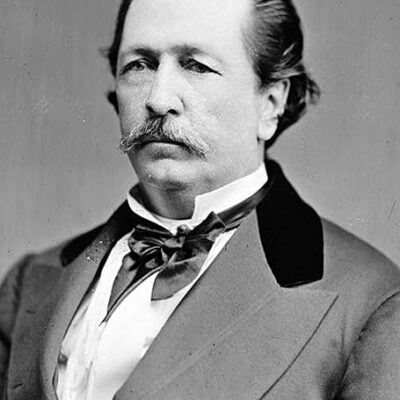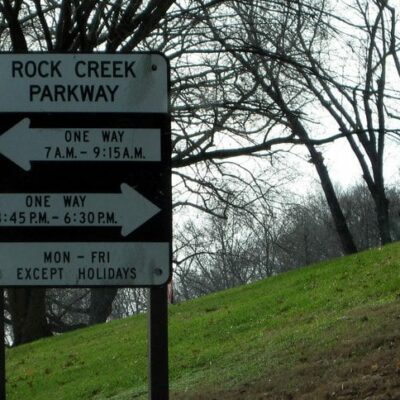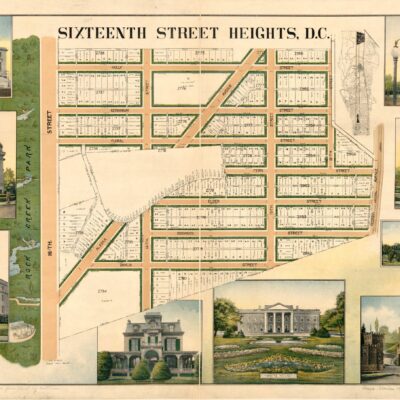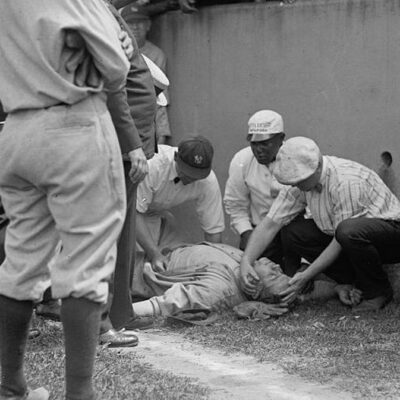This is a guest post by GoDCer from Poolesville, Jack (the guy that tipped us off to some great stories, like the decapitated convict).

On the afternoon of August 23, 1933 the Weather Bureau updated an already ominous forecast by predicting that strong winds and heavy rain would inundate the Washington area. The storm had formed in the Atlantic days before and had come ashore in Virginia causing much damage there. Rain had already begun falling and some streets were becoming impassable and traffic was snarled. In the era before tropical storms were named this storm was later called, The Chesapeake and Potomac Hurricane.
At the same time the fast express train, The Crescent Limited, had left New York and was speeding towards Washington’s Union Station and then after a layover in Washington it would continue to its eventual destination of New Orleans. When the train left Baltimore the engineer was handed an advisory telling him about high water and as a result, he reduced his speed to thirty miles an hour as he approached the city.
As the train neared Washington it began its short journey over the Anacostia River (then known as Eastern Branch) on a bridge that had been built in 1903. Halfway across the bridge the supports began to give way and the locomotive and several passenger cars plunged into the flood-swollen river.
Amazingly there was a low loss of life and only the engineer and fireman perished. Thirteen passengers were injured. Pullman porters were credited with saving many lives by breaking out windows in the sleeping cars allowing passengers to escape. One porter, only known as Arthur, had the presence of mind to run over a mile to the nearest telephone to summon help.
The body of the engineer, Arthur Bridge of Washington, was found underneath his locomotive. The fireman was found buried in the mud.
Among the casualties were twenty prized turkeys that were being shipped to a Bethesda man. Four turkeys survived and were donated to survivors of the wreck.
During the early morning hours the desk clerk at the Mayflower Hotel was startled to see a man walk from the street into the lobby in his pajamas. He told the clerk that he was A.G. Tugwell, a guest at the hotel, and the chairman of the Louisiana Highway Commission. He was quoted in the Post saying;
How any of us got out is more than I can understand. I was in the coach that broke through the trestle and dropped into the water. My first recollection is of standing on the window of my berth hanging from the curtain rod. We (the man in the next berth) heard water rushing all around us. The porter eventually opened the window and they escaped.
An inquiry into the wreck by the Interstate Commerce Commission determined that the bridge collapsed because years of rushing water had undermined the bridge supports. The high water from the tropical storm had finally collapsed the bridge. The commission also faulted the bridge construction company for shoddy work.
A week later, H.D. Woodson, a gas station operator who worked near the bridge noticed that the bridge abutments on the Washington, Baltimore, and Annapolis Railroad Bridge next to his station were undercut. He notified railway officials who credited him with preventing another disaster.
Repairs got underway almost immediately since the bridge was the Pennsylvania Railroad’s only route into Washington. In the first week an employee was killed when a telephone pole fell on him and then a pile driver accident injured several more workers.
The bridge now belongs to Amtrak and scores of passenger trains pass over the Anacostia River Bridge every day.




















